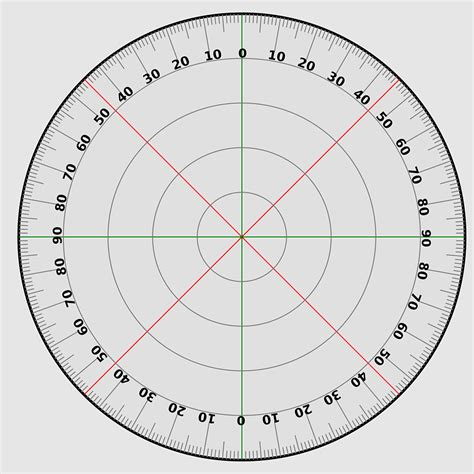360 Out Of 400 As A Percentage
Kalali
Mar 31, 2025 · 4 min read

Table of Contents
360 out of 400 as a Percentage: A Comprehensive Guide
Calculating percentages is a fundamental skill in various aspects of life, from academic pursuits to professional settings. Understanding how to express a portion of a whole as a percentage is crucial for interpreting data, making informed decisions, and communicating effectively. This article delves deep into the calculation of 360 out of 400 as a percentage, offering multiple approaches, explaining the underlying concepts, and exploring practical applications.
Understanding Percentages
A percentage is a way of expressing a number as a fraction of 100. The term "percent" literally means "out of one hundred" (per centum in Latin). Percentages are used extensively to represent proportions, ratios, and changes in values. They offer a standardized way to compare different quantities and make comparisons easier to understand.
Calculating 360 out of 400 as a Percentage: Method 1 – The Fraction Method
The most straightforward method involves converting the given numbers into a fraction and then converting that fraction to a percentage.
Step 1: Formulate the Fraction:
Represent "360 out of 400" as a fraction: 360/400
Step 2: Simplify the Fraction (Optional but Recommended):
Simplifying the fraction makes the subsequent calculations easier. Both the numerator (360) and the denominator (400) are divisible by 40:
360 ÷ 40 = 9 400 ÷ 40 = 10
This simplifies the fraction to 9/10.
Step 3: Convert the Fraction to a Decimal:
Divide the numerator by the denominator:
9 ÷ 10 = 0.9
Step 4: Convert the Decimal to a Percentage:
Multiply the decimal by 100 and add the percentage symbol (%):
0.9 × 100 = 90%
Therefore, 360 out of 400 is 90%.
Calculating 360 out of 400 as a Percentage: Method 2 – The Proportion Method
This method utilizes the concept of proportions to solve for the percentage.
Step 1: Set up a Proportion:
We can set up a proportion where x represents the percentage we are trying to find:
x/100 = 360/400
Step 2: Cross-Multiply:
Cross-multiply to solve for x:
400x = 36000
Step 3: Solve for x:
Divide both sides by 400:
x = 36000 ÷ 400 = 90
Therefore, x = 90%, confirming that 360 out of 400 is 90%.
Calculating 360 out of 400 as a Percentage: Method 3 – Using a Calculator
Most calculators have a percentage function that simplifies the process significantly.
Step 1: Divide the Part by the Whole:
Divide 360 by 400:
360 ÷ 400 = 0.9
Step 2: Multiply by 100:
Multiply the result by 100:
0.9 × 100 = 90
Step 3: Add the Percentage Symbol:
Add the percentage symbol to obtain the final answer: 90%
Real-World Applications of Percentage Calculations
Understanding percentage calculations is crucial in various real-world scenarios. Here are a few examples:
1. Academic Performance:
Imagine a student scoring 360 out of 400 on an exam. Calculating the percentage (90%) provides a clear representation of their performance relative to the total possible score. This helps in evaluating their understanding of the subject matter and identifying areas for improvement.
2. Business and Finance:
In business, percentages are fundamental for analyzing financial data. For instance, a company might calculate the percentage of sales growth, profit margins, or market share. This data is essential for making strategic decisions and monitoring the company's performance. Calculating the percentage of successful sales calls, customer retention rates, and various other key performance indicators (KPIs) is vital for tracking success and identifying areas needing attention.
3. Data Analysis and Statistics:
Percentages are essential tools in data analysis and statistical interpretation. They simplify the representation of complex data sets, making trends and patterns more readily apparent. For example, representing the percentage of respondents who prefer a particular product in a survey is significantly easier to understand than dealing with raw numbers. This understanding is critical for researchers, analysts, and anyone working with datasets.
4. Everyday Life:
Percentages are commonly used in everyday situations. Calculating discounts in stores, understanding interest rates on loans, and interpreting tax rates all involve percentage calculations. Even something as simple as calculating the tip at a restaurant often involves estimating a percentage of the bill.
Beyond the Calculation: Understanding the Significance of 90%
A score of 90% represents a high level of achievement or success. It indicates a strong understanding of the subject matter or a high level of performance in a particular area. The context, however, is crucial. While a 90% score on an exam is excellent, a 90% success rate in a crucial surgery might still warrant improvement strategies.
Conclusion: Mastering Percentage Calculations
Mastering percentage calculations is a valuable skill with widespread applications. The methods described in this article – the fraction method, the proportion method, and using a calculator – provide flexible and efficient ways to solve percentage problems. Understanding the underlying concepts and applying these techniques will enable you to confidently tackle percentage calculations in various academic, professional, and personal contexts. Remember that the accuracy and efficiency of your calculations are paramount, whether dealing with personal finances, analyzing business data, or interpreting scientific research. The ability to translate numbers into percentages allows for clearer communication, better decision-making, and a deeper understanding of the world around us.
Latest Posts
Latest Posts
-
What Is 19 20 As A Percent
Apr 02, 2025
-
2 Is What Percent Of 9
Apr 02, 2025
-
A Limit Involving The Cosine Function
Apr 02, 2025
-
How Much Is 36 Inches In Feet
Apr 02, 2025
-
What Is A 5 Out Of 7
Apr 02, 2025
Related Post
Thank you for visiting our website which covers about 360 Out Of 400 As A Percentage . We hope the information provided has been useful to you. Feel free to contact us if you have any questions or need further assistance. See you next time and don't miss to bookmark.
